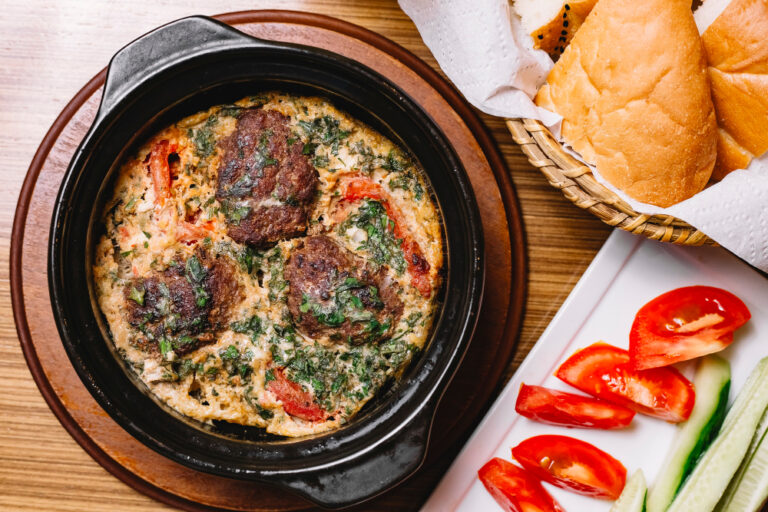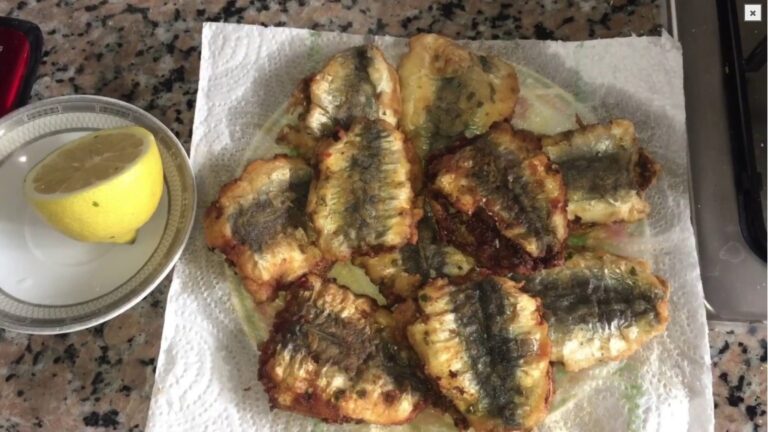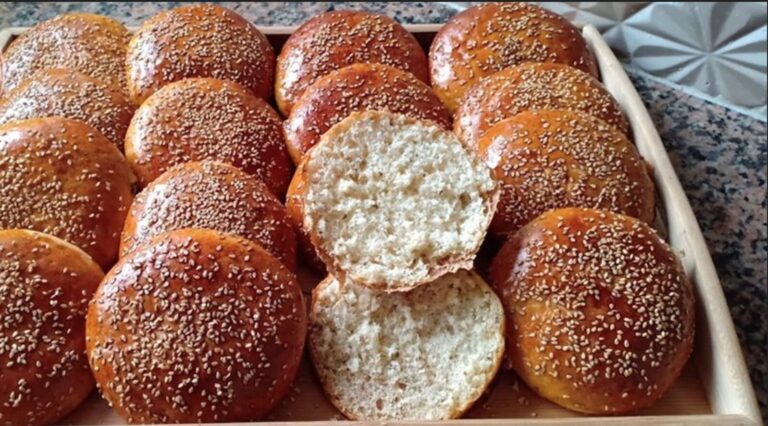
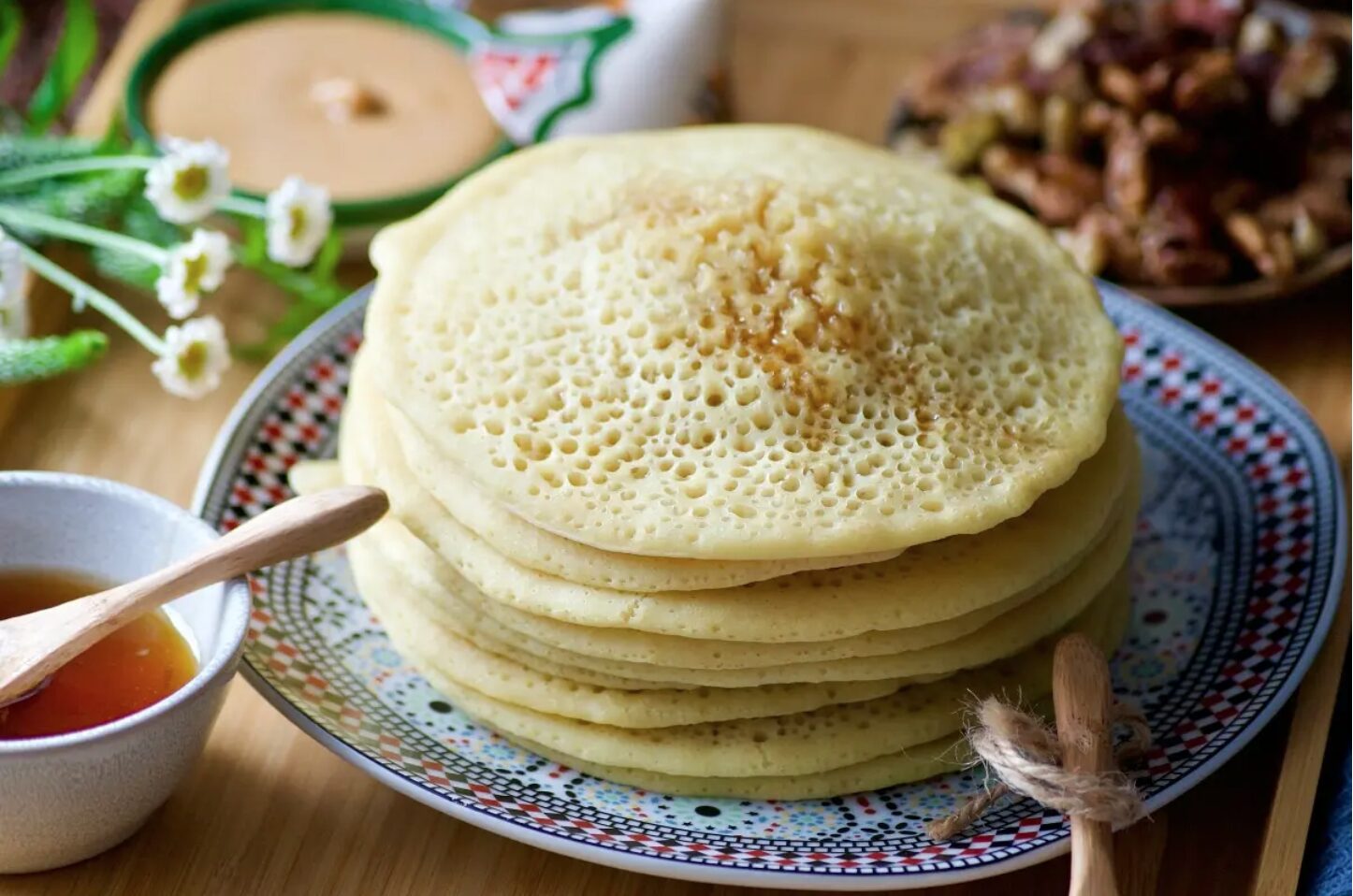
Among Morocco’s many culinary treasures, Beghrir – Traditional Moroccan Semolina Pancakes Recipe stands out as one of the most beloved. Known as the “thousand-hole pancakes,” Beghrir is a fluffy, spongy delight often served for breakfast or afternoon tea.
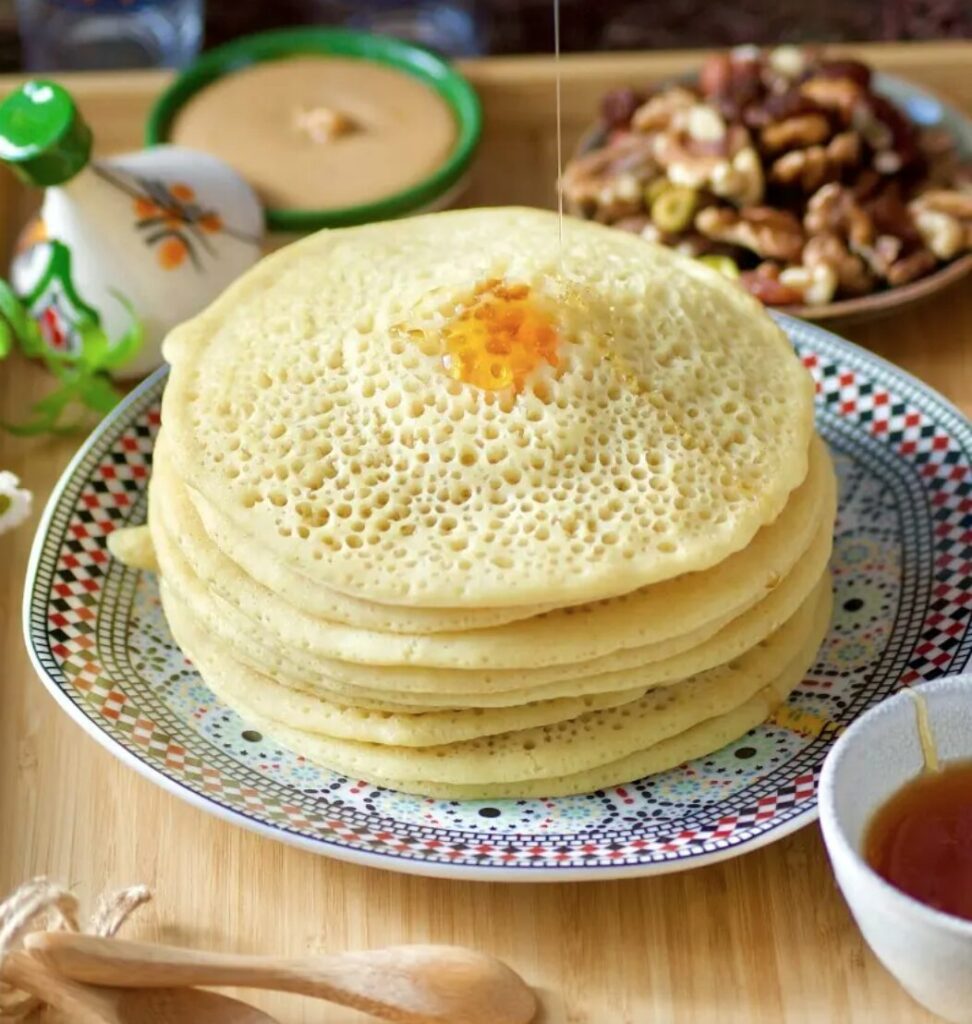
What makes Beghrir so special is not just its unique texture but also the way it brings people together. Whether drizzled with honey-butter syrup or enjoyed plain with Moroccan mint tea, Beghrir is an essential part of Moroccan hospitality.
In this blog, we’ll dive into the history of Beghrir, how to enjoy it when traveling in Morocco, cultural traditions tied to this dish, and tips for making it at home.
What is Beghrir?
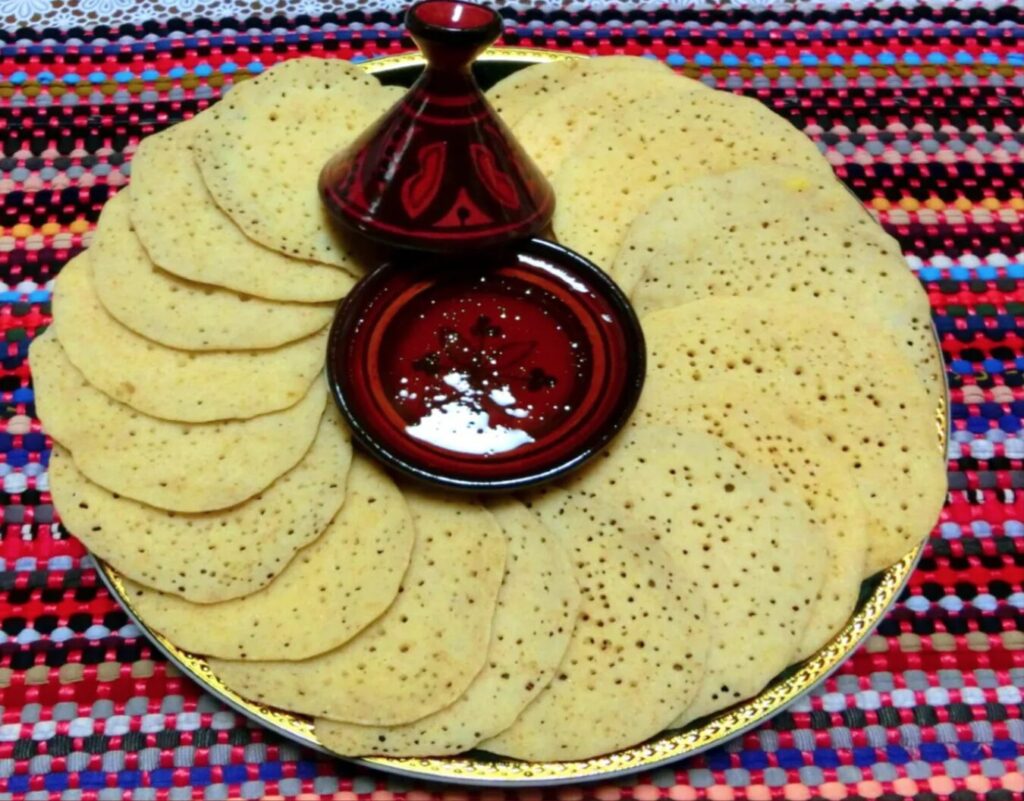
Beghrir is a type of pancake made from semolina, flour, yeast, and baking powder. Unlike Western pancakes, Beghrir is cooked only on one side, leaving the top covered in small holes that absorb sauces perfectly.
The distinctive holes are formed by the fermentation process and careful cooking technique. Traditionally, Beghrir is served with a mixture of melted butter and honey, but regional variations include serving it with olive oil, jam, or even amlou (a paste of almonds, honey, and argan oil).
This dish reflects Morocco’s blend of Berber and Arab culinary traditions, showing how simple ingredients can create something extraordinary. You’ll find it especially during Ramadan, family gatherings, and breakfast tables across Morocco.
Where to Try Beghrir in Morocco

If you’re traveling through Morocco, Beghrir is one of the easiest dishes to find.
Marrakech – The Heart of Tradition
In Marrakech, you’ll see Beghrir sold fresh in bustling markets or served at riad breakfasts. Pairing it with Moroccan mint tea is an absolute must.
Fez – The Soul of Moroccan Cuisine
Fez, with its rich culinary traditions, offers Beghrir made with fine semolina and a slightly sour taste from longer fermentation. Local families often prepare them fresh every morning.
Rabat & Casablanca – Modern Twists
In these coastal cities, Beghrir sometimes appears in cafés with modern toppings such as chocolate spread, reflecting the blending of Moroccan tradition with global tastes.
Home Hospitality
The most authentic experience of Beghrir is at a Moroccan home. Guests are warmly welcomed with stacks of these pancakes, symbolizing generosity and abundance.
Travel Tips and Cultural Insights
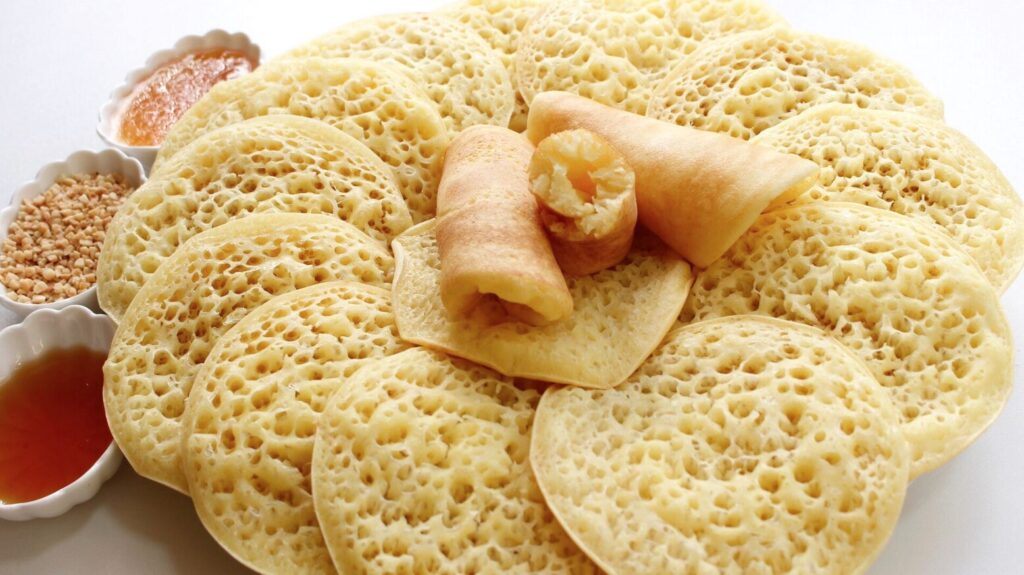
Travelers who want to experience Beghrir in Morocco should keep a few cultural tips in mind:
- Breakfast Tradition: Beghrir is most often enjoyed in the morning with tea or coffee.
- Ramadan Special: It’s a staple dish during Ramadan, often served to break the fast at iftar.
- Communal Eating: In Moroccan culture, food is often shared. Beghrir is presented in large stacks, and guests are encouraged to take as much as they like.
- Cooking Classes: Many Moroccan cooking schools offer lessons on making Beghrir, which is a fun hands-on experience for travelers.
Traveler Stories – Sweet Memories of Beghrir
A French traveler visiting Fez recalled her first taste of Beghrir during Ramadan. After a long day exploring the medina, she was invited into a local family’s home for iftar. The warm honey-soaked pancakes instantly became her favorite Moroccan food.
Another traveler, a Canadian food blogger, shared how she attended a cooking class in Marrakech. The highlight was learning how to achieve the perfect “thousand holes.” She later recreated Beghrir at home, impressing her family with a Moroccan breakfast.
These stories reflect how food, especially Beghrir, creates cultural bridges between travelers and Moroccan families.
Future Travel Recommendations and Seasonal Insights
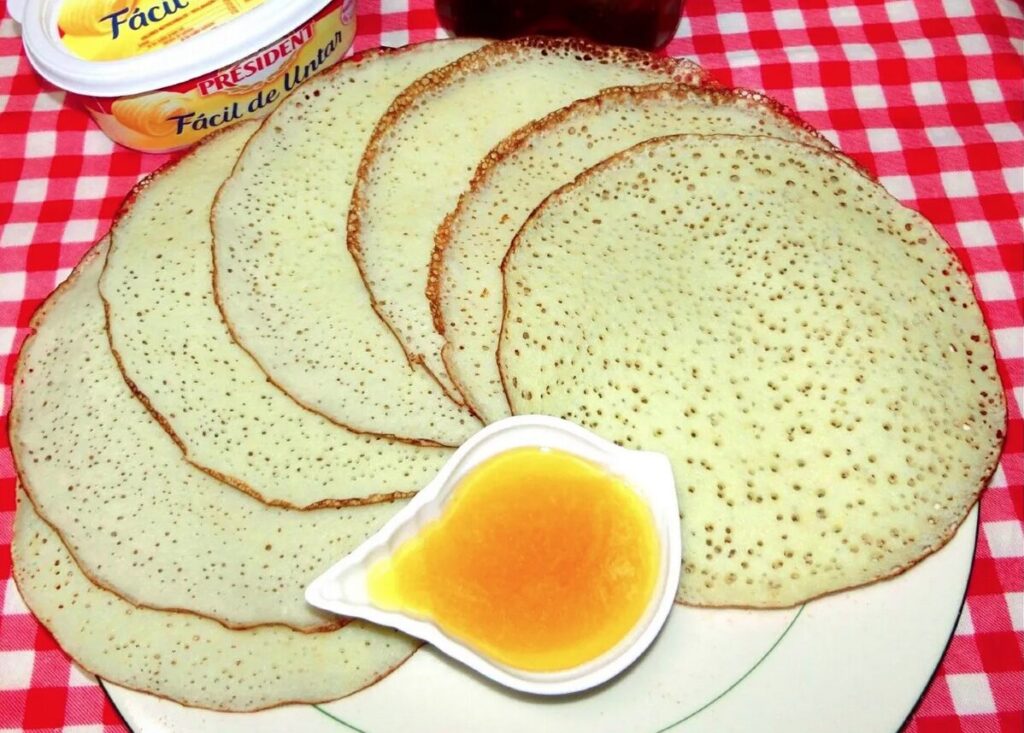
For travelers planning a Moroccan trip, here are some recommendations:
- Best Time to Taste Beghrir: Visit during Ramadan to see Beghrir on almost every table at sunset.
- Cooking Workshops: Cities like Marrakech, Fez, and Essaouira offer hands-on workshops where you can learn the recipe.
- Pairings: Try Beghrir with Moroccan mint tea, fresh orange juice, or even traditional harira soup during Ramadan.
- Souvenirs: Bring back Moroccan semolina and saffron to recreate the recipe at home.
FAQ: Beghrir – Traditional Moroccan Semolina Pancakes Recipe.
What makes Beghrir different from regular pancakes?
Beghrir is made with semolina and cooked only on one side, creating tiny holes on the surface that absorb sauces like honey and butter.
Can Beghrir be made gluten-free?
Yes, gluten-free versions can be made using rice flour or cornmeal, though the texture may differ from the traditional recipe.
Is Beghrir eaten only during Ramadan?
No, Beghrir is enjoyed year-round, but it’s especially popular during Ramadan and family celebrations.
What toppings go best with Beghrir?
Traditional toppings include honey and butter, but you can also try jam, Nutella, or amlou for a modern twist.
Where can I learn to make Beghrir?
Many Moroccan cooking classes, especially in Marrakech and Fez, include Beghrir in their lessons, giving travelers a chance to practice the recipe.
Conclusion
The Beghrir – Traditional Moroccan Semolina Pancakes Recipe is more than just a breakfast dish. It’s a taste of Moroccan hospitality, a link to Berber traditions, and a dish that brings families and travelers together.
Whether you try it in a Marrakech riad, during Ramadan in Fez, or by learning the recipe in a cooking class, Beghrir is a must-experience part of Morocco’s culinary heritage.
-Next time you plan your Moroccan adventure, be sure to add Beghrir to your foodie bucket list. For more guides on Moroccan cuisine and culture, explore our other posts on Skies of Morocco.

